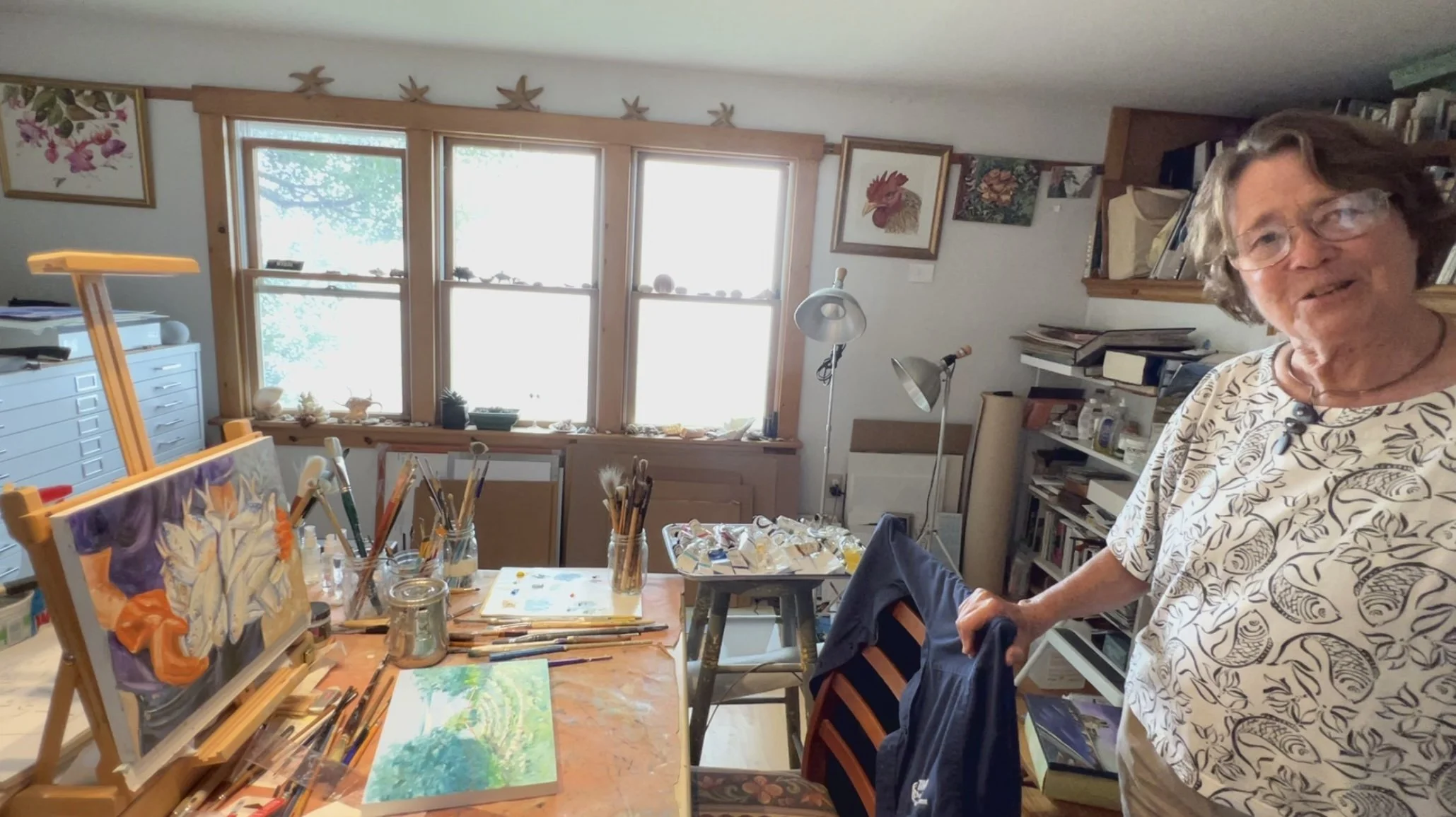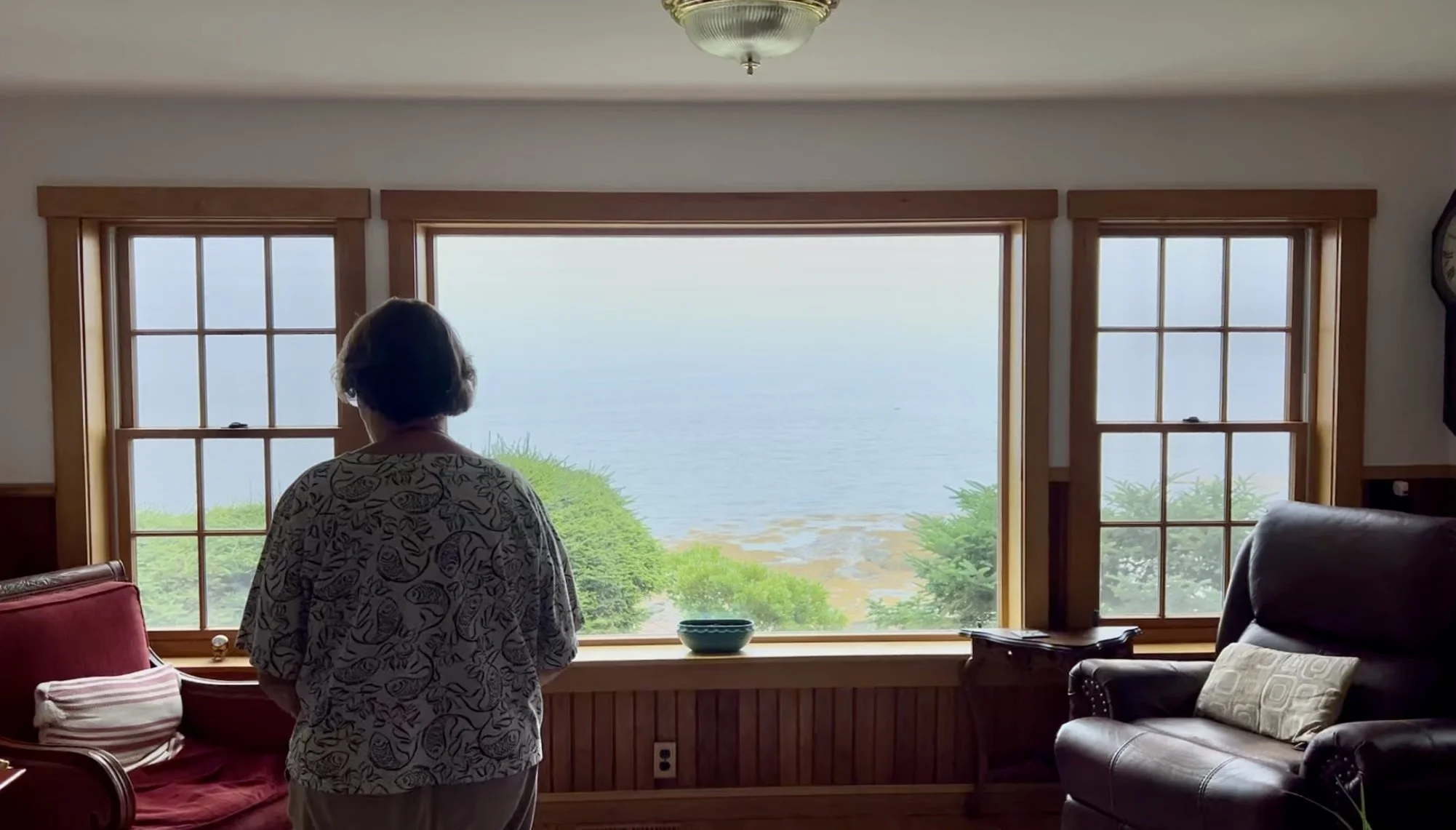Ink, Brush, and the People We Meet: Jean Kigel’s Journey with Asian Art
In the quiet town of Waldoboro, Maine, a small studio-gallery along the coast holds an unexpected world: golden-edged Japanese Shikishi boards, Gyotaku fish prints, and ink paintings that flow with the spirit of East Asia and the beauty of Maine. This is the world of Jean—an artist whose life and brushwork are deeply interwoven with her experiences in Japan, China, and her home state of Maine.



Jean has long had a fascination with Asian art. Her first ink stone came from Japan. Her collection of ink brushes, many of which she uses frequently in her painting rituals. "A few hours of painting in the morning gives me energy and leaves the rest of the day open," she said. Sumi-e, a Japanese ink painting technique known for its minimalist strokes and deep emotional expression, plays an important role in Jean’s work. Whether it's roosters, flowers, or Maine's natural seascapes, she uses this traditional art form to portray the essence of her subjects. Her flower paintings, often done on traditional Japanese Shikishi boards with washi paper and gold foil, are a perfect reflection of her appreciation for fine detail and cultural tradition.
Jean with her Asian brush paintings on traditional Shikishi boards.
Jean’s first connection to Japan came through the Maine-Aomori Sister State program. She was asked to donate a piece of art for a museum auction in Aomori, and she chose a Gyotaku print of a fish. Jean taught herself this traditional Japanese technique of Gyotaku, where a real fish is inked and pressed onto rice paper to create an exact print. “I read about it in The New York Times: Japanese fishermen coming in with big fish, making prints to preserve the fish in its originality,” she recalled. Jean experimented with different inks and brushes, often blending two to three color tones in one brushstroke, an Asian technique she now uses frequently in her work.
Her journey to Japan many years ago took her deeper into the culture she had come to love. Jean visited galleries, watched artists work, and experienced a meditative tea ceremony, which she described as “very slow, very traditional, and incredibly fascinating.” She laughed as she remembered the confusion of navigating Tokyo’s train stations: “We had to take pictures of the signs just so we’d know where to come back to!” But what stayed with her most were the people. Once, while trying to walk back from a Japanese pear orchard, strangers pulled over and insisted on giving her and her companions a ride to the bus stop. “People talk about how nice folks are in Maine; Japan was exactly the same,” Jean said. Jean's ties to Japan are not just about art, but they’re also deeply personal. Her parents-in-law lived in Japan for three years, and she visited them during their final year there. Her aunt once had a Japanese pen-pal she met in Europe. They eventually met at Tokyo’s iconic Hachiko statue in Shibuya. After her aunt’s passing, Jean continued that pen-pal friendship for a long time, and she still remembers the Japanese phrase she learned and used decades ago in Japan: ビールはどこですか?(Where is the beer?), Jean laughed again.
Jean illustrating the process of mounting her painting with a brush.
A woodblock print Jean purchased when she was in Japan.
While her roots in Asian art run deep, Jean also remains anchored in Maine. Her home gallery, originally her garage, was renovated by her husband, Dan, into a beautiful exhibition space, complete with stairs and a second-floor room he built for Jean. Jean is also a part of a vibrant community of Waldoboro artists. “At the end of the day,” she said, “the more you engage with people, the more this world reveals itself as a beautiful place.”
Whether it's through a paintbrush or a simple act of kindness, Jean’s Maine-Japan story reflects how cultural connections can be built one stroke at a time. This summer, 12 local studios, including Jean’s, will participate in a two-day tour showcasing their work. In August, she will host her 25th annual Eastern Views exhibit, featuring a series of seascapes in oil, watercolor fish, and French garden vegetables in Asian brush style. In addition, the Alfond Gallery at the historic Waldo Theater will present Eastern Resplendence: a special exhibition of Jean’s richly colorful Asian brush paintings of florals, landscapes, birds, and vegetables during the Waldoboro Friday Art Walk on August 22 from 4–7 p.m. “I hope these works bring you pleasure,” Jean says, “and are meaningful to you in some way.” To Jean, her art connects Maine and Japan; these two places, though oceans apart, can always find shared beauty through creativity, culture, and care.
Invitation to Jean’s annual exhibit on August 8th-10th, 2025.
Find out more about Jean’s gallery and upcoming exhibition: https://www.jeankigel.com/
🌊 Subscribe for more Maine–Japan stories that celebrate culture, community, and creativity across the sea!
📩 Want to share your story? Email us at jcaofmaine@gmail.com.









